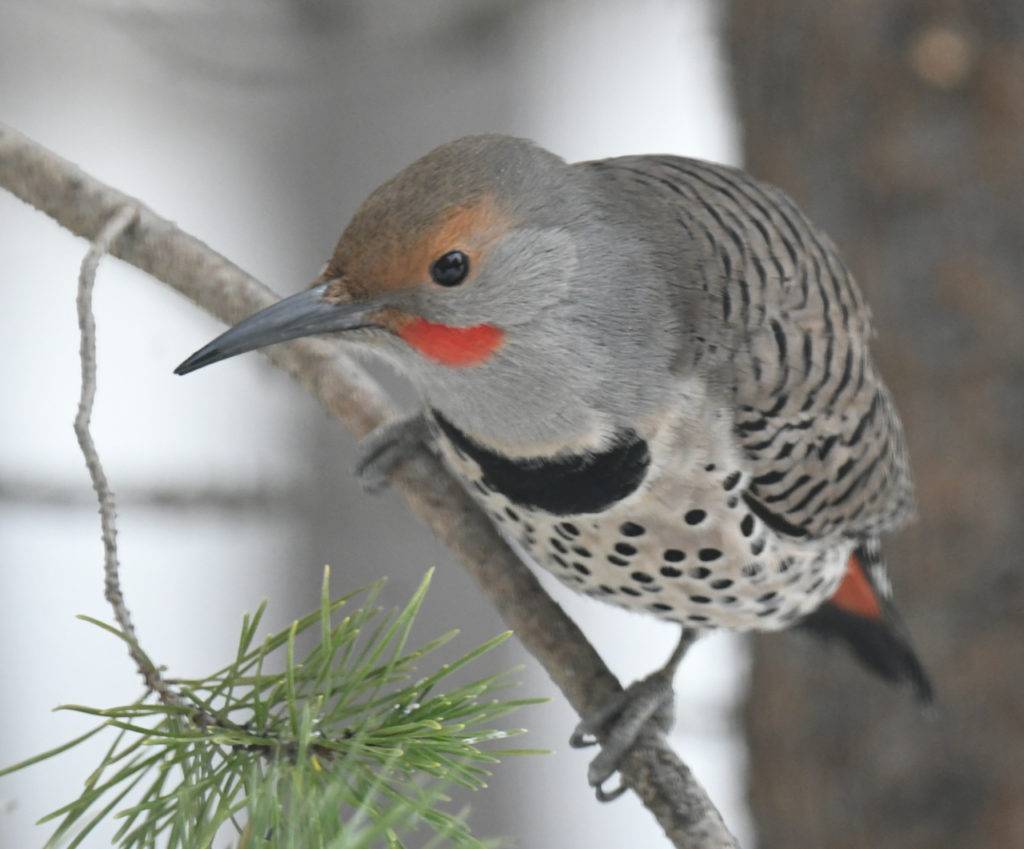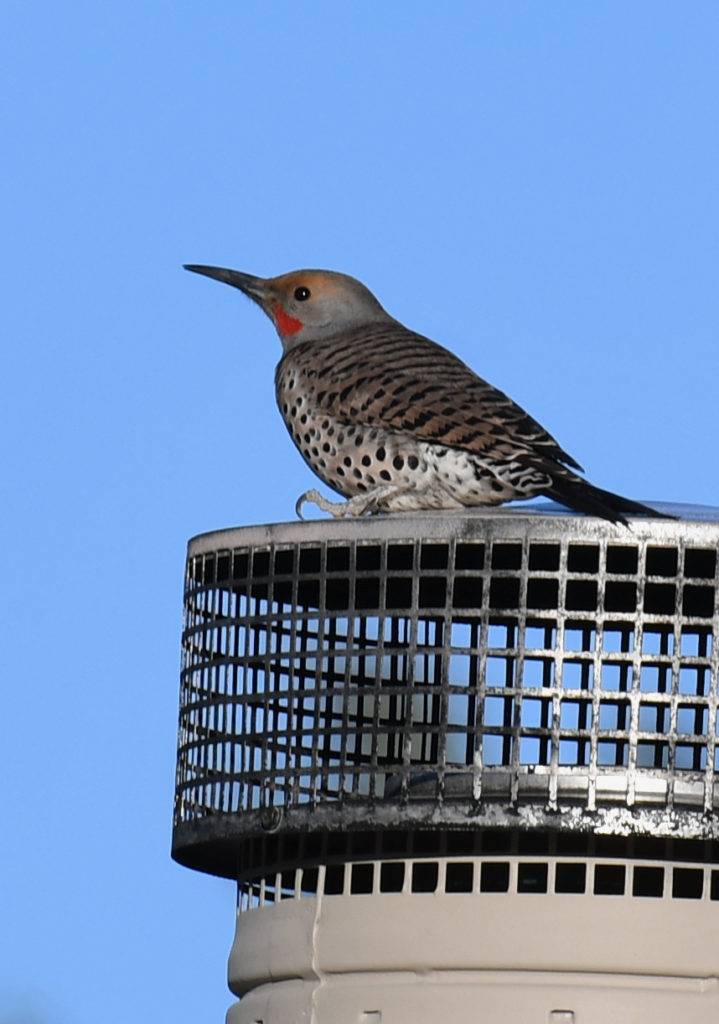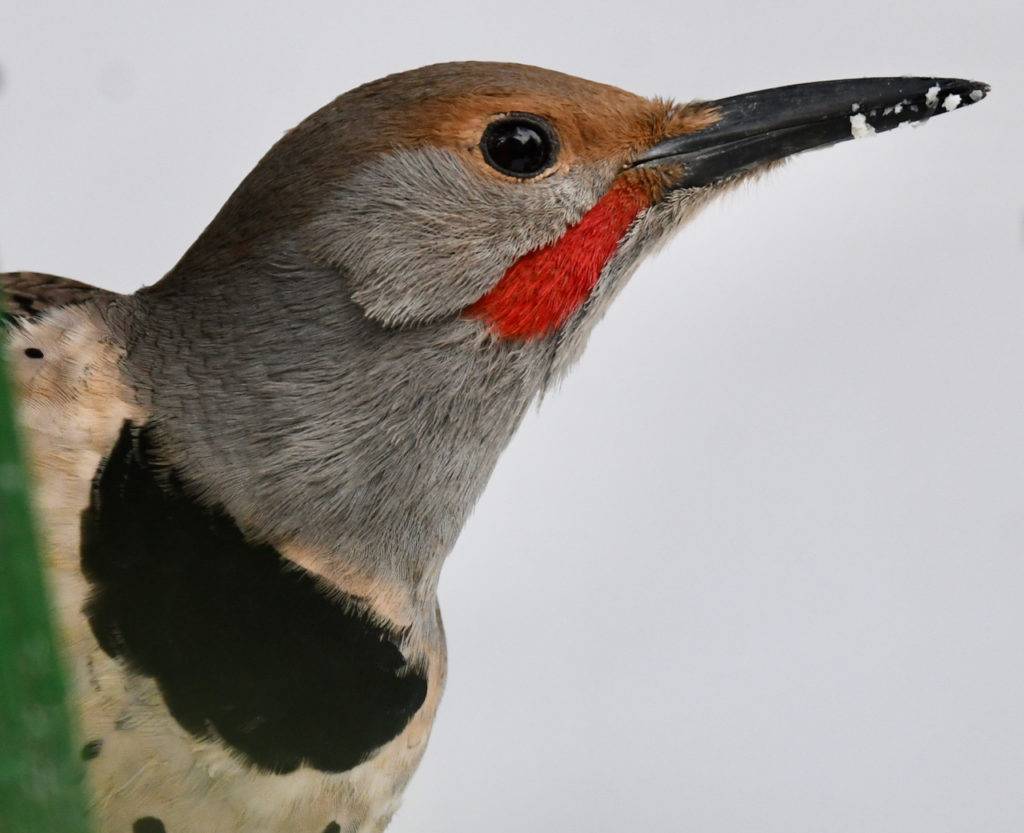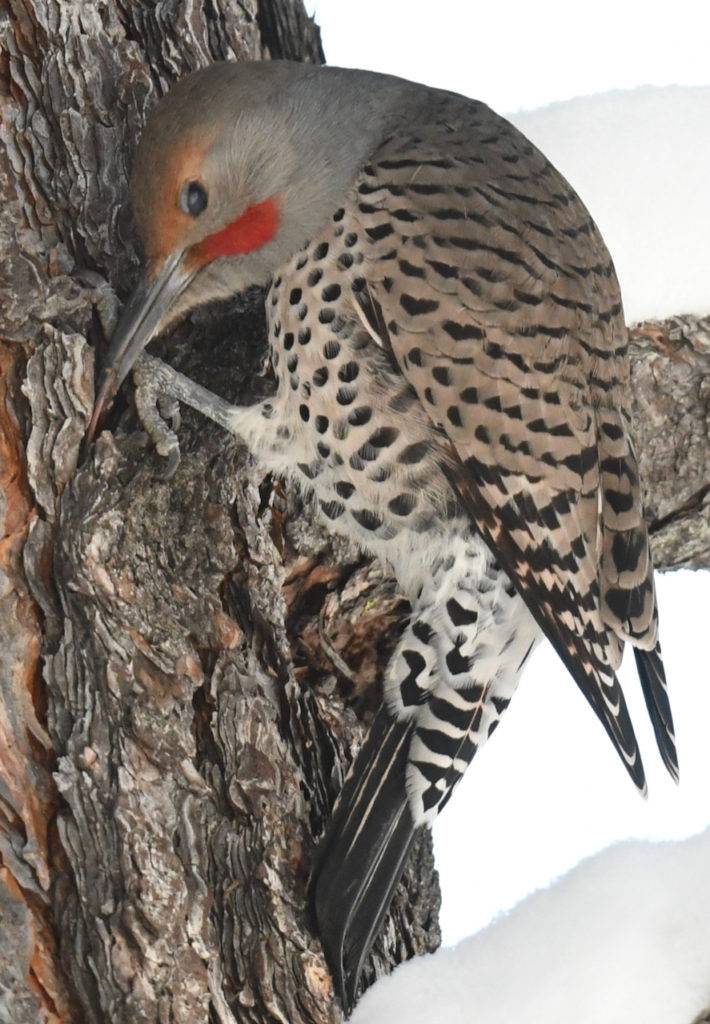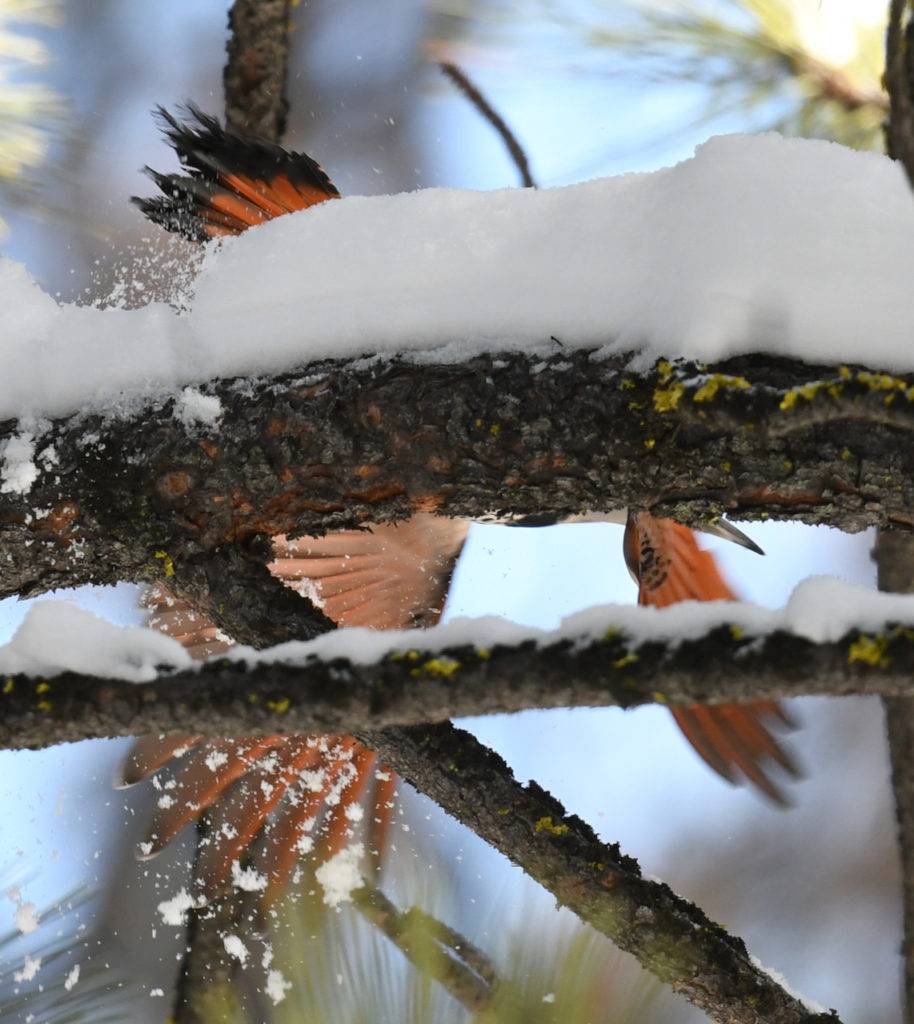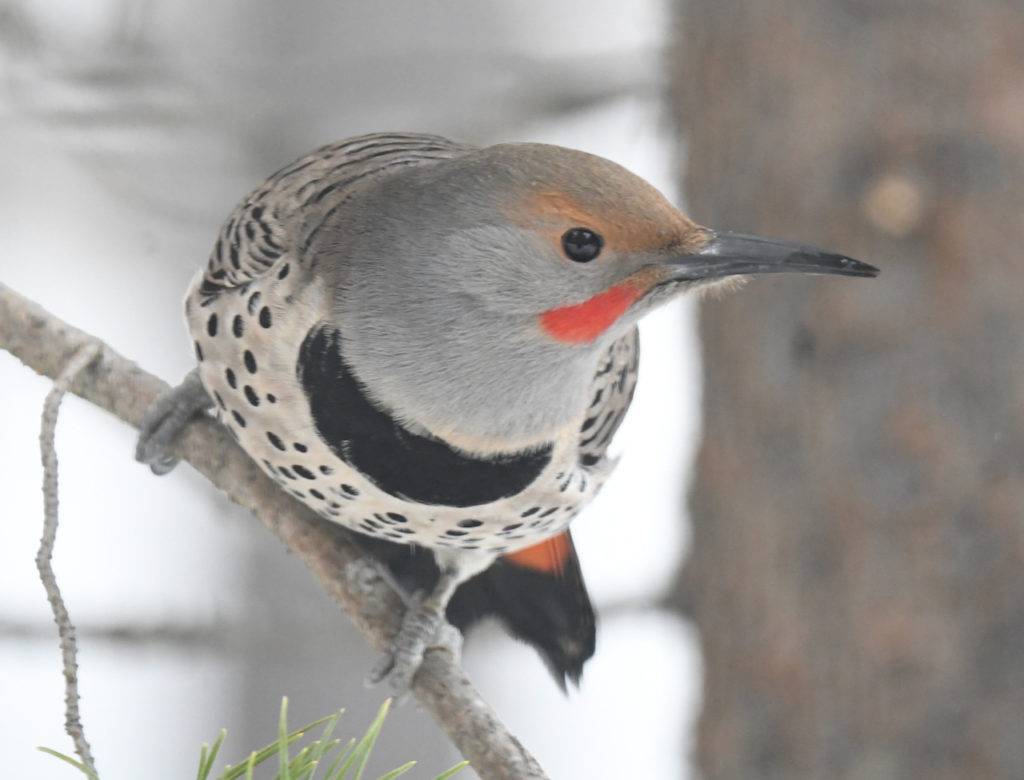(Colaptes auratus)
By Sevilla Rhoads
Even though we see and hear this woodpecker almost every day in Sunriver, we remain constantly awed by the dashingly handsome and flamboyant Northern Flicker. Loud in every way, with its calls and colors, the Flicker lights up even the grayest winter days around the Nature Center.
Found all across North America (although the colors vary in different sub-species) in almost every natural habitat with trees and enough clearings for foraging, the Northern Flicker is a versatile species. Whereas most woodpeckers stay primarily on trees, you often find Flickers foraging on the ground.
Flickers’ sticky and barbed tongues can extend over two inches beyond the end of their bills, so they can reach into holes and crevices, including ant nests, and lap up insects. Their salvia neutralizes the acid of insects they eat. Flickers also eat seeds and fruit and love suet.
Not only do they eat ants, but you might see Flickers lying on the ground near an ant nest, letting ants swarm all over their feathers. The ants secrete formic acid, which repels parasites, so the Flickers are essentially getting a lice shampoo service!
When you see one, look carefully at the Flicker’s markings. There are at least eleven subspecies. If you see yellow instead of red markings, you may have spotted a rare variation for this area. If you are from the East Coast, you are used to yellow markings, but the red-shafted ones are rare for your home. You may also notice more tan on the head of some birds and perhaps even some red on the back of the head, which could indicate the bird is a hybrid of the red and yellow-shafted subspecies. A fun challenge while you walk around Sunriver is to look for the rarer markings on the Flickers you pass.
If you enjoy the beauty of the Flicker or want to familiarize yourself with the way local birds appear, consider searching by species name on the eBird app by searching for Flicker in the Deschutes County region. If you then hit “view all” photographs, you can enjoy all the local submitted photographs. Studying pictures of locally seen birds can help with identification. General bird guides often show birds from other areas, which can be confusing, especially when traveling from places with different plumages. Also, the one or two guide examples often do not cover all the variations you might see.
Watching a Flicker hammering or sticking its head in crevices, you may wonder how it does not damage its eyes, and then you might realize the Flicker’s eyes appear to have turned from black to gray. That gray sheen is the bird’s safety googles – an extra translucent eyelid, called a nictitating membrane (cool term, huh!), that slides out from the side of the eyes when needed. They also use their third eyelid for protection when feeding their eager sharp billed young!
Many Native American tribes have stories that include Flicker characters where often the Flicker represents fire and renewal somewhat like a Phoenix. Also, Flicker feathers were used in some tribe’s ceremonies and headdresses.
Some of you reading this are frowning because you heard Flickers are pests. However, this perception is a misunderstanding about Flicker behavior because if you understand their activities, Flickers actually help reduce pest issues. Flickers drum on and sometimes make holes in human structures. The drumming should not cause structural damage because it is a courting or territorial display not designed to make holes.
If you put up a Flicker nest box near the structure, the birds should nest in the box rather than make holes. The Flickers in the box near your home will then defend the area from other Flickers and sometimes squirrels or other creatures competing for the same food.
You are lucky if you have Flickers regularly checking your buildings. If Flickers start excavating for food on your structure, that means you have an infestation of something like Carpenter Ants (one of their favorite foods). The danger to the building is the insect problem, not the bird that alerted you to the issue while reducing the insect numbers.
On rare occasions, if there is not an effective alternative nesting site for a Flicker, they might try to excavate a nest cavity in a building. There are many safe ways to intervene before the nest is complete, but the law requires you leave the nest alone if they get as far as laying eggs. You have to wait until the chicks fledge, and then you can set up deterrents and nest boxes to avoid nest holes next season.
According to the 2016 Partners in Flight data, the Northern Flicker is a “common bird in steep decline” which could disappear in the next twenty to thirty years. In the last forty or so years, we have lost about fifty-two percent of the Flicker population.
Thanks to Chuck Gates for reviewing!
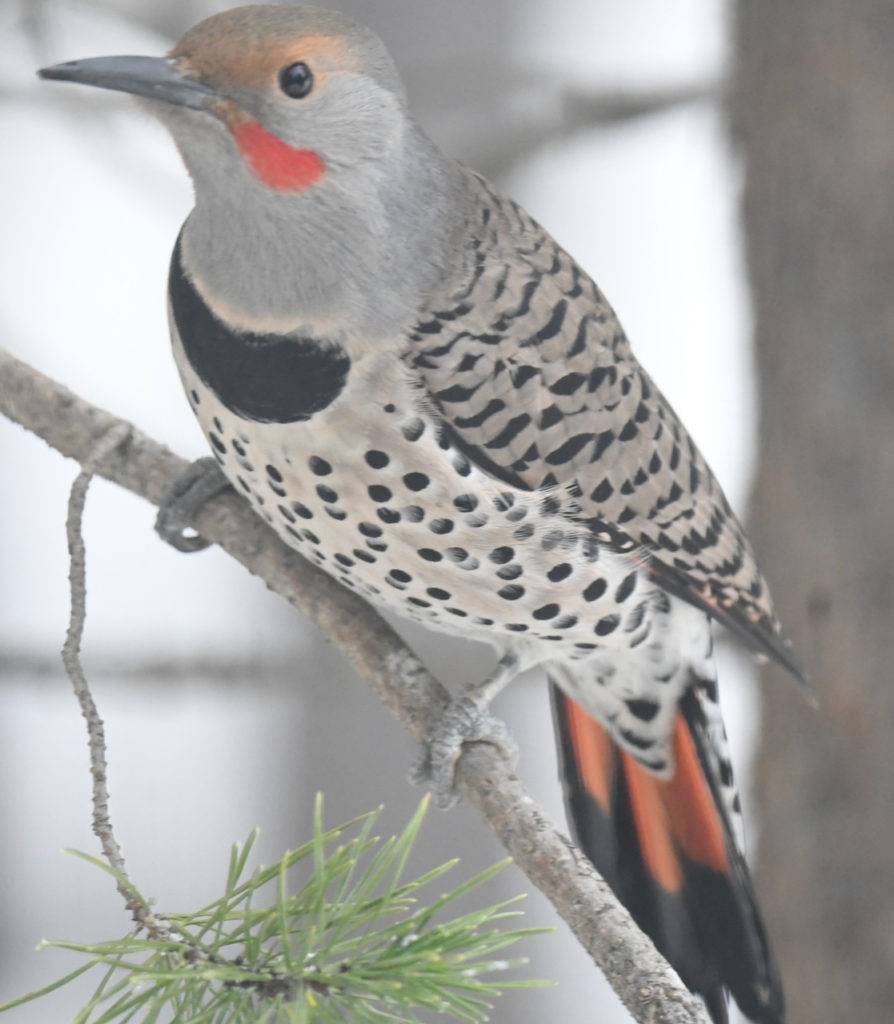
How to identify a Northern Flicker
Large woodpecker (11-14’’ in height with up to 21” wingspan) with white rump seen in flight. Orange-red underwings and inner tail. A large black collar on the upper buff-colored chest with black spots below on buff. Black bars down the brown back with black stripes on the upper tail and end of the tail is black. Males have a red mustache under the beak. The head is gray with a tan area above the eye.

